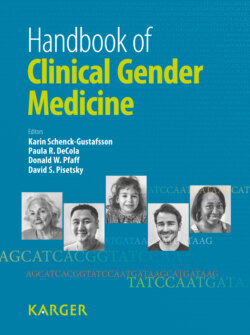Читать книгу Handbook of Clinical Gender Medicine - Группа авторов - Страница 100
На сайте Литреса книга снята с продажи.
Fostering Resilience
ОглавлениеThe next step for the AL model would be to examine the efficacy of interventions aimed at reducing AL [8]. As outlined by McEwen [20], a key question that arises is whether these interventions should be best tailored in accordance with top-down modifications versus conventional biomedical remediation. At an individual level, brain-centered programs that encourage improved sleep quality/quantity, social support, a sense of purpose, self-esteem, a healthy diet, substance avoidance, and physical activity would be undoubtedly beneficial. Interventions at social levels might include policies that create incentives for beneficial practices in the workplace, cleaner and safer neighborhoods, and motivating higher education.
Specifically for the elderly, well-being therapy that emphasizes autonomy, purpose in life, personal growth, positive relations with others, environmental mastery, social activities, and self-acceptance could be coupled with more traditional cognitive and physical interventions [8]. These person-centered approaches to diminish AL collectively represent viable alternatives or complements to pharmaceutical strategies, although these must also be considered amid conceptual reluctance.
